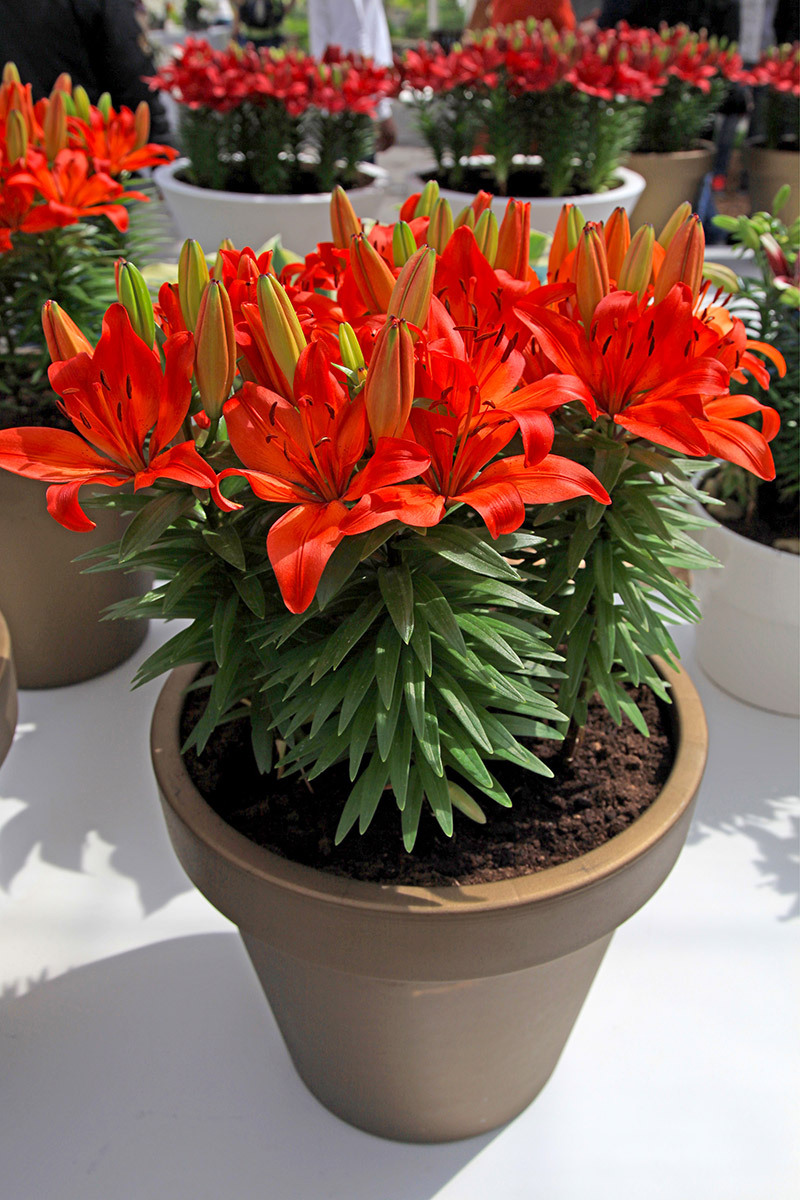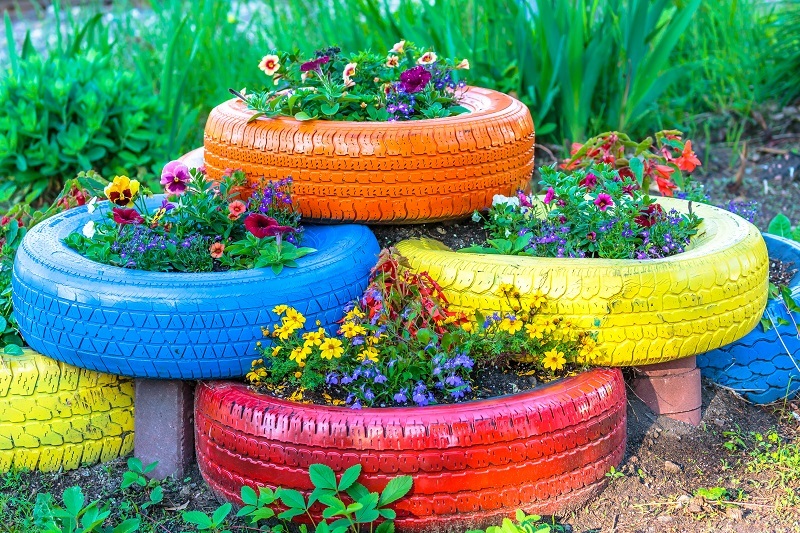7 Astonishing Facts About Tulips That Will Amaze You
Posted on 13/08/2025
7 Astonishing Facts About Tulips That Will Amaze You
If you've ever marveled at the vibrant colors of tulip flowers in a spring garden, you're not alone. Tulips are more than just beautiful blooms; this iconic flower has an incredible history, unique characteristics, and some seriously surprising secrets. Join us as we explore seven astonishing facts about tulips that will leave you amazed and eager to share your newfound knowledge!
1. Tulips Sparked the World's First Economic Bubble
When you think of big financial events, Tulip Mania probably isn't the first thing that comes to mind. However, tulip bulbs were at the center of one of the fiercest speculative bubbles in history during the 17th century. In the Netherlands, tulips became so wildly popular and expensive that some rare bulbs sold for more than a luxurious canal house in Amsterdam!
- The "Tulip Mania" occurred between 1634 and 1637.
- Prices for tulip bulbs skyrocketed, only to crash disastrously, causing huge financial losses for investors.
- This event is widely considered the first recorded speculative bubble in financial history.
Imagine people trading their homes, livestock, and fortunes for a single tulip bulb! While the craze may seem absurd today, tulip mania remains a cautionary tale about economic speculation.

2. Tulips Are Not Originally From the Netherlands
When most people hear the word "tulip," the Netherlands often springs to mind--the country is adorned every spring with a patchwork of tulip fields. But did you know that tulips are not native to the Netherlands? This may just be one of the most astonishing facts about tulips!
- Tulips originated in Central Asia, especially around the Tien Shan Mountains and regions that are now part of Turkey, Kazakhstan, and Uzbekistan.
- The Ottoman Empire was the first to cultivate tulips, and it was from Turkey that the tulip spread to Europe in the 16th century.
The word "tulip" actually comes from the Persian word "delband," meaning turban, said to resemble the flower's unique shape. So while the Dutch perfected the cultivation and made tulips a symbol of their culture, their origins are rooted further east, making tulips a truly global botanical superstar.
3. There Are Over 3,000 Varieties of Tulips
It's easy to recognize a tulip, but did you know there is an astonishing diversity in the world of tulip flowers? Horticulturists and enthusiasts have developed and cataloged more than 3,000 registered varieties of tulips, each with unique characteristics in color, shape, and blooming season.
- Tulips are classified into 15 different groups based on flower form and time of bloom.
- The most popular varieties include Darwin Hybrid, Triumph, Parrot, and Lily-flowered Tulips.
- Tulips display an amazing array of colors--except for pure blue, which does not occur naturally in tulips.
This diversity makes them a favorite among gardeners and florists, as each variety brings something unique to the garden. From classic single-colored blooms to ruffled, multi-hued petals, there's a tulip for everyone!
4. Tulips Can Be Eaten (But With Caution!)
Here's a fact that might surprise you: during certain periods in history, tulips have been used not just as decoration, but as food. During World War II, the Dutch faced severe food shortages and discovered that tulip bulbs could sustain people in desperate times.
- Tulip bulbs were eaten raw, boiled, or ground into flour for bread.
- The taste is described as starchy, sometimes bitter, reminiscent of onions or potatoes.
- Important caution: Some tulip bulbs can be toxic, causing stomach upset; they should only be consumed under expert guidance.
Nowadays, you'll still find tulip petals used as garnishes or in creative culinary presentations. Just make sure to check whether your variety is safe to eat!
5. Tulips Have Been Symbolic for Centuries
The mesmerizing beauty of the tulip isn't just eye candy; these flowers are rich in symbolism across cultures. From the gardens of sultans to Dutch royal ceremonies, tulip symbolism has evolved and spread around the world.
- In Turkish culture, tulips symbolize paradise on earth, charity, and perfect love.
- Red tulips stand for true love, while purple tulips are linked with royalty.
- In the Netherlands, the tulip is a symbol of national pride and springtime renewal.
Even today, bouquets of tulips remain a beloved gesture for expressing love, friendship, and appreciation across the globe.
6. Tulips Have an Amazing Ability to Move
One of the most fascinating facts about tulips is their ability to move and grow even after being cut. Unlike most cut flowers that simply wither away, tulips continue to lengthen and change position in the vase.
- Tulip stems can grow up to 2 inches after being cut and placed in water!
- The flowers follow the light--they exhibit phototropism, bending and bowing towards sunlight or other light sources.
- This movement adds a dynamic, ever-changing display to tulip arrangements at home.
This unique trait is one reason why florists and flower lovers adore tulips--their arrangements come alive and offer something new each day.
7. The Netherlands: The Tulip Capital of the World
Though tulips didn't originate in the Netherlands, they've become deeply intertwined with Dutch culture. Modern-day Netherlands is the undisputed global leader in tulip cultivation, breeding, and export.
- The Netherlands produces over 4 billion tulip bulbs each year, exporting them to gardens around the world.
- The country's tulip fields create dazzling landscapes that attract millions of tourists every spring, especially at the famous Keukenhof Gardens.
- The annual Tulip Festival in Amsterdam celebrates Dutch heritage, artistry, and the beauty of tulips with parades, workshops, and street displays.
Whether on a cycling tour through the countryside or visiting a bustling flower market, experiencing Dutch tulips is truly unforgettable. The sight of sweeping fields in bloom--ribbons of red, yellow, pink, and orange--has become a timeless symbol of spring.
Bonus: Interesting & Lesser-Known Tulip Facts
Since tulip appreciation seems to grow with every bloom, here are a few extra tidbits you might not know:
- Rembrandt tulips are famous for their dramatic feathered patterns, which are actually due to a harmless virus once considered a desirable trait.
- Some species, called botanical tulips, are smaller and often hardier than the traditional hybrids, thriving in tough climates.
- The tallest known tulip variety is the Tulipa gesneriana, with stems sometimes reaching up to 30 inches tall!
- Tulip bulbs can be 'forced' indoors to bloom during winter by simulating cold weather in a refrigerator for several weeks before planting.
How to Grow Stunning Tulips in Your Own Garden
Inspired by these astonishing tulip facts? Adding tulips to your garden is easier than you think. Here's a brief guide:
Planting Tips for Tulip Lovers
- Best planting time: Autumn, about 6-8 weeks before the first hard frost is expected.
- Soil: Well-drained, loose soil rich in organic matter is ideal.
- Depth: Plant bulbs about 6 to 8 inches deep, with the pointed end facing upwards.
- Spacing: Leave about 4 to 6 inches between bulbs for larger varieties, less for smaller species.
- Watering: Water thoroughly after planting, and allow the bulbs to rest through winter.
In spring, you'll be rewarded with a breathtaking display of color that returns year after year.

Conclusion: Tulips, the Ultimate Harbingers of Spring
Tulips are far more than just pretty flowers. They've inspired art, shaped economies, symbolized powerful emotions, and delighted generations with their astonishing variety and resilience. From their beginnings in Central Asia to their reign in Dutch fields and beyond, tulips continue to enchant and amaze flower lovers worldwide.
The next time you see a cluster of tulips, you'll know there's much more to their beauty than meets the eye. Whether you're a history buff, a gardening enthusiast, or simply appreciate the wonders of nature, these amazing tulip facts are sure to add a fresh burst of color to your own world.
Ready to start your own tulip journey? Plant your favorite bulbs this fall, and experience the magic for yourself every spring!
Frequently Asked Questions About Tulips (FAQ)
Are tulips easy to care for?
Yes, tulips are among the easiest spring bulbs to grow, requiring only well-drained soil, sunlight, and a good cold period before blooming.
How long do tulips typically bloom?
Most tulip varieties bloom for 1-2 weeks. By planting different types, you can extend the flowering season from early to late spring.
Can I grow tulips indoors?
Absolutely! With a process called "forcing," you can chill bulbs in your refrigerator and then plant them in pots for winter blooms indoors.
Are tulips safe for pets?
Be cautious--tulip bulbs are toxic to cats and dogs if ingested. Always plant bulbs in areas pets can't dig up.
Share these fascinating tulip facts with friends and family, and let the wonder of this incredible flower brighten your day!
Latest Posts
Your Birth Flower: A Gateway to Understanding Who You Are
Unlocking Secrets: 8 Facts About Sunflowers You Didn't Know
Transform Your Space with Vibrant Cut Flowers





